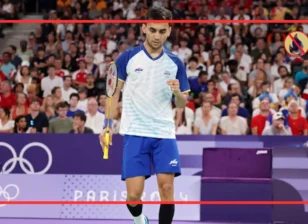France’s Racial Demographics: A Comprehensive Overview
A Comprehensive Overview ” delves into the nation’s ethnically diverse landscape, shaped by post-World War II immigration during the boom years of the late 1940s to early 1970s. Waves of migration from Southern Europe, North Africa, sub-Saharan Africa, and South-East Asia transformed France into a multi-ethnic society. Notably, the country adopts a ‘colour-blind’ model, avoiding direct policies targeting racial or ethnic groups.
Instead, policies focus on geographic or class criteria, emphasising social inequalities. The evolution from temporary economic migrants to permanent residents reflects a shift in acceptance. France’s approach navigates a delicate balance, emphasising anti-racist policies while steering clear of explicit race-conscious measures.
Historical Context
● Post-World War II Immigration Boom (Late 1940s to Early 1970s)
France witnessed a substantial demographic transformation in the post-World War II era, marked by an influx of immigrants. This period, often referred to as the “boom years,” saw waves of migration from Southern Europe, North Africa, sub-Saharan Africa, and South-East Asia. The socio-economic reconstruction efforts opened doors for foreign labour, laying the groundwork for the nation’s evolution into a multi-ethnic society.
● Transformation into a Multi-ethnic Society
The amalgamation of diverse cultural backgrounds during the post-war years laid the foundation for France’s multi-ethnic society. The infusion of varying traditions, languages, and customs created a unique tapestry, enriching the nation’s social fabric. This era marked a pivotal juncture in France’s demographic composition, setting the stage for future discussions on racial and ethnic dynamics.
The Color-Blind Model: Policies and Criteria
● France’s “Color-Blind” Model
In contrast to some nations, France adopted a “color-blind” model, where policies were ostensibly based on geographic or class criteria rather than explicit racial or ethnic distinctions. This approach aimed to create a unified French identity, emphasising common citizenship over individual backgrounds. However, this model has faced scrutiny for potentially overlooking systemic inequalities faced by non-white communities.
Immigration and Integration
● Evolution from Temporary Economic Migrants to Permanent Residents
Initially viewed as temporary economic migrants, many individuals from non-European backgrounds gradually became permanent residents in France. The economic contributions of these communities played a crucial role in shaping policies that transitioned from short-term labour solutions to long-term integration strategies.
● Acceptance of Non-White Individuals as Permanent Residents
Over time, France witnessed a shift in societal attitudes, with non-white individuals increasingly accepted as permanent residents. This acceptance, coupled with evolving immigration policies, laid the groundwork for a more inclusive French society, challenging the notion of a homogenous national identity.
● Citizenship Acquisition and Family Migration
France’s approach to immigration and integration included facilitating citizenship acquisition and family migration. These policies aimed to solidify ties between the state and its diverse population, fostering a sense of belonging and social cohesion.
Policy Approach: Addressing Inequalities
● ”Race-Conscious” Policies Avoidance
France has consistently avoided “race-conscious” policies, choosing not to explicitly address racial or ethnic factors in its public policies. Instead, the focus has been on mitigating social inequalities using geographic or class criteria. This approach, while intending to promote equality, has sparked debates about the effectiveness of addressing systemic discrimination.
● No Public Policies Based on Race
In adherence to its “colour-blind” model, France refrains from implementing public policies explicitly based on race. The emphasis on equal treatment for all citizens, regardless of ethnic background, reflects a commitment to a unified national identity while sometimes overlooking the nuanced challenges faced by specific communities.
● Focus on Social Inequalities Using Geographic or Class Criteria
France’s policies, while not overtly racial, have targeted gender inequalities through geographic or class criteria. This approach aims to address disparities in education, employment, and housing, indirectly impacting various ethnic groups. Critics argue that a more nuanced understanding of discrimination is necessary to fully confront the complexities of racial and ethnic dynamics.
Anti-Racist Policy Repertoire
France’s anti-racist policy repertoire focuses on combating discrimination without explicitly acknowledging racial or ethnic categories. The emphasis is on creating an inclusive society by addressing root causes of inequality, promoting diversity, and fostering a shared national identity.
Conclusion
France’s racial demographics have evolved significantly since the post-World War II immigration boom, shaping a diverse and multi-ethnic society. The “colour-blind” model, policies centred on geographic or class criteria, and the avoidance of “race-conscious” approaches characterise the nation’s unique stance. As France navigates the complex terrain of immigration, integration, and societal equality, ongoing dialogues surrounding the effectiveness of its policies remain crucial for fostering an inclusive and equitable future.





